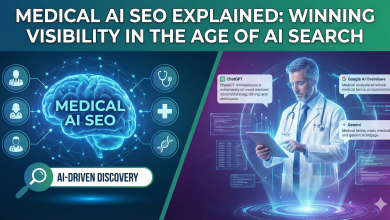
For customer-facing teams, especially in industries like retail and e-commerce, images are more than visual assets. They’re critical components of the brand experience, shaping how customers perceive products, make decisions, and stay loyal.
In fact, 77% of consumers decide to complete a purchase based on product images and videos, and 42% will abandon an online sale if there are no or low-quality product images or videos. Even seemingly small flaws—such as off-brand or distorted logos, unrealistic colors, or incorrect textures—can instantly signal poor quality or inauthenticity. Because shoppers often rely solely on product images to judge reliability and value, these visual inconsistencies create doubt, erode trust, and make customers far less likely to complete a purchase.
Yet many teams still rely on outdated image workflows: manual retouching, external vendors, or generic AI tools that aren’t built for the complexity or scale that enterprise operations demand. While many general-purpose AI solutions are fast and creative, they prioritize novelty—not operational accuracy, governance, or brand control. In high-stakes enterprise environments, “close enough” just isn’t good enough.
The Limits of Image Generation from Generic GenAI Tools
Enterprises have embraced GenAI for text-based content creation, but image generation remains a stubborn bottleneck. Generic AI tools, trained on massive but generalized datasets, can produce visuals that look acceptable at first glance—but collapse under scrutiny.
When every product image is a digital stand-in for the real thing, even slight inaccuracies can undermine trust. Meanwhile, teams face pressure to produce more content, faster than ever before. But traditional workflows and generic GenAI can’t keep up with the demands of speed, volume, and precision. As product lines grow to tens of thousands of SKUs across global markets, maintaining visual fidelity becomes overwhelming.
Why “Close Enough” Isn’t Enough
While generic AI tools like ChatGPT and others can generate visually striking images, they often fall short when it comes to precision. These models are trained on general datasets and optimized for imaginative output — not brand fidelity. Ask one to recreate a specific product, and it may distort colors, logos, or textures in subtle but critical ways.
For retailers and manufacturers, product images must accurately represent the real item. Flaws like a chair pictured with the wrong armrest, a sneaker with a warped logo, or a shirt in the wrong shade don’t just look inaccurate — they misrepresent the product itself. When shoppers see images that don’t match what they’ll actually receive, it breaks trust and leads to higher return rates, abandoned carts, and increased support issues.
Meeting Consumer Expectations With Purpose-Built AI
To move forward, enterprise organizations need image generation solutions built from the ground up for precision, integration, and scalability. Purpose-built tools close the gap in four critical ways:
1. Pixel-Perfect Precision
Every pixel matters when your image is your product. Generic tools might generate something “close,” but that’s not good enough when decisions rely on lighting, shape, texture, and brand-specific detail.
Purpose-built tools are trained to deliver pixel-perfect accuracy, preserving exact product features like shadow realism and logo placement. This level of fidelity reduces returns, strengthens brand credibility, and ensures the product matches the customer’s expectations.
2. Brand Consistency at Scale
As product catalogs expand across regions and platforms, maintaining consistent imagery becomes harder. Manual quality checks introduce variation and increase risk.
Enterprise image tools apply visual brand guidelines—covering lighting, angles, positioning, backgrounds, and margins—automatically across every asset. This ensures compliance and consistency without slowing down production.
3. Scalable Personalization
Personalized content requires tailored visuals for different markets, audience segments, and seasonal campaigns—each with its own context and creative nuance. Producing these manually is not only time-consuming, but also unsustainable at enterprise scale.
With purpose-built tools, teams can generate hundreds of personalized variants from a single source image. This makes personalized engagement scalable across channels without increasing operational burden.
4. Enterprise Integration
Many generic GenAI tools operate in isolation, forcing teams to adapt their workflows around the tool instead of the other way around.
Enterprise-ready image AI integrates via API-first design, human-in-the-loop controls, and configurable automation. This gives IT, marketing, and operations teams the ability to scale without sacrificing governance or speed.
Finding the Right Image Gen Solution
Not all GenAI tools are built for enterprise use. Look for solutions that guarantee visual accuracy across campaigns and functions. The most capable tools match exact color values, preserve realistic shadows, and generate digital twins that maintain product fidelity at scale.
Speed is equally critical. Choose tools that reduce manual effort, eliminate bottlenecks, and enable campaign responsiveness. Prioritize systems that support automated guidelines across every SKU.
Finally, ensure the solution fits your enterprise context—multi-brand, multi-market, and multi-team environments—where workflow integration and governance must be top priorities.
Scaling Pixel-Perfect Imagery into a Brand Advantage
Speed is no longer the only benchmark for GenAI performance. Precision, consistency, and control are just as important, especially in environments where visuals drive conversions, reduce support costs, and reinforce brand value.
Image generation is no longer a creative edge case. It’s a business-critical workflow. Enterprise teams that invest in purpose-built image AI today will scale tomorrow—with trust, efficiency, and competitive advantage built in.




